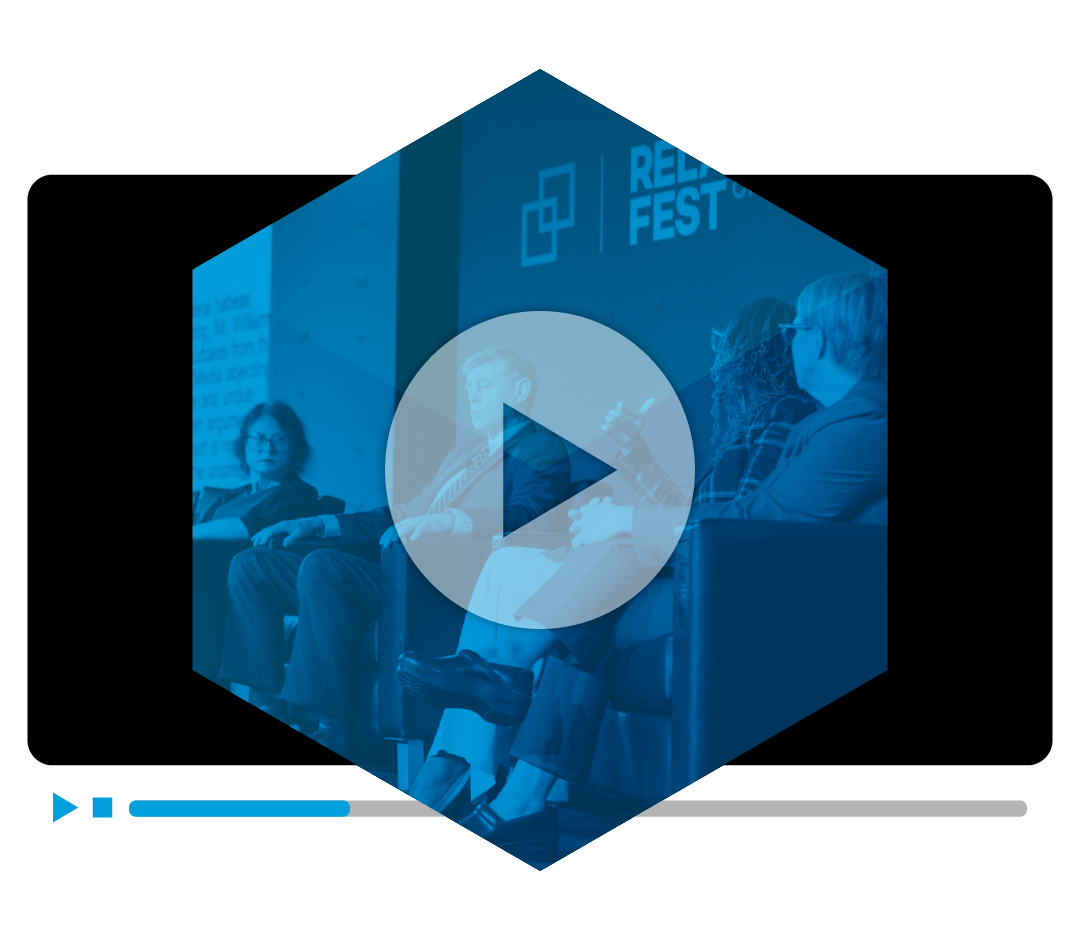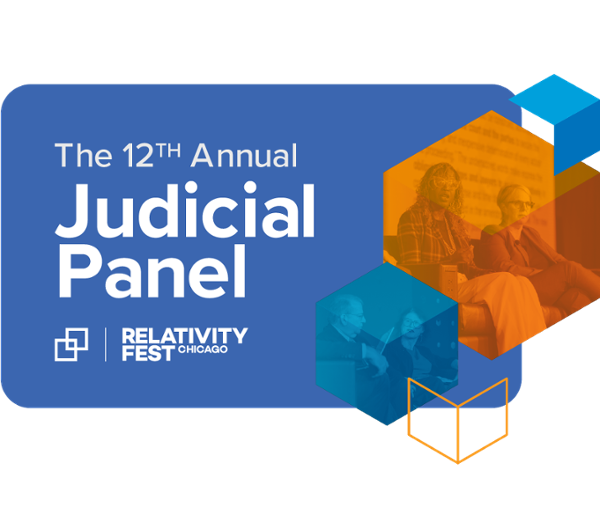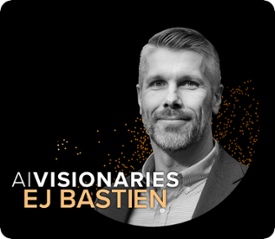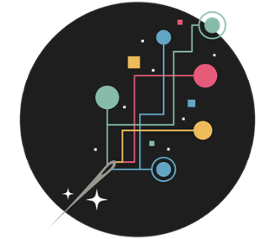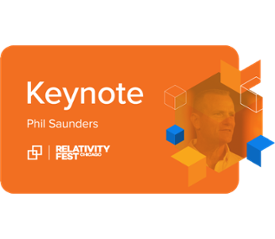Ten years ago, the rules changed.
With the 2015 e-discovery amendments to the Federal Rules of Civil Procedure, cooperation, proportionality, and sanctions reform were major issues. Among the amendments were:
- Rule 16(b)(3)(B), which added guidance on early planning for digital evidence and confidentiality to help streamline litigation; and
- Rule 26(b)(1), which addressed the scope of discovery and proportionality.
While these refreshed rules helped advance the goals of just, speedy, and inexpensive litigation—they also triggered a polarizing disagreement on the means to that end.
Today, in an age of technology and data, the conversation continues to metamorphize into an even meatier discussion on AI’s impact on judicial decision-making. With the use of AI for legal applications increasing, and little formal case law to guide it, this dialogue is more pressing than ever.
Ever wonder what the judges have to say about all this? You’re in luck. Relativity’s own David Horrigan took it up with a panel of esteemed jurists at the 2025 Judicial Panel, which featured representation from the United States and the United Kingdom:
- U.S. Magistrate Judge Allison Goddard, U.S. District Court for the Southern District of California
- Hon. Justice Tanya R. Kennedy, Associate Justice, Appellate Division, First Department, New York State Supreme Court
- Chief U.S. Magistrate Judge William Matthewman, U.S. District Court for the Southern District of Florida
- Dr. Victoria McCloud, Legal Chair, National Medical Practitioners’ Tribunal (UK), & Master of the King’s Bench (Ret.)
- U.S. District Judge Xavier Rodriguez, Western District of Texas
The following insights from the bench explore urgent questions, like “How involved should the judge be?” and “How can we build trust in AI?”, empowering lawyers and technologists alike with invaluable judicial guidance in a time of unprecedented change.
‘Everything Rests on the Facts’
In the absence of extensive formal case law governing the use of generative AI, some lawyers feel they’re left to navigate uncharted territory. But lack of precedent doesn’t mean lack of accountability.
“There’s no precedent; everything rests on the facts.”
– Judge Allison Goddard
AI is held to the same legal and ethical standards as any other tool. Judges don’t need explicit case law to validate AI—they need facts, standards, and competence. Judge Goddard puts the agency in the hands of the parties, saying, “There’s no precedent; everything rests on the facts. The lawyers have to decide how they’re going to argue.”
Many of the judges paint a similar picture:
“If you’re the proponent of this AI, you have a burden to establish that it’s producing an output that’s reliable and repeatable—otherwise the evidence does not get admitted.” – Judge Rodriguez
“I think it’s something that a lot of attention has to be paid to at the front end. Lawyers and e-discovery folks, I think, have a big obligation in teeing the issue up so the court can rule.” – Judge Matthewman
AI-generated evidence is not inherently invalid—it just has to be argued and validated like any other evidence. This kind of dialogue opens the door for AI to be treated as a legitimate tool, provided lawyers understand how to present it effectively.
And this isn’t the first time we’ve seen this. Take Judge Andrew Peck’s early rulings on technology-assisted review (TAR), which, a decade ago, helped establish judicial trust in AI-assisted workflows. Just like the TAR days, AI practitioners must simply build defensible, transparent processes for generative AI in the absence of formal precedent—not forego the technology altogether.
The Role of the Judge in a Data-Driven World
David also polls the panel of five honorable jurists: Should today’s judge be more active or less active in discovery matters? David’s question doesn’t just send the panel off to the races; it sets the scene of an era where technology is once again redefining how the legal process plays out in practice.
More Active
The majority of panelists agree: Rule 1 tasks judges and lawyers with an obligation to work cooperatively in controlling the expense and time demands of litigation. What's up for debate is whether striking said balance requires more proactive involvement from the judge.
Judge Matthewman puts it bluntly, sharing, “I’ve seen too many cases run off the rails in the discovery process and then it ends up delaying summary judgment, it ends up delaying trial, it ends up requiring more continuances—and my basic bottom line is I think litigation’s gotten too expensive, too long, too lengthy. I think that, as a judge, we can help by quickly intervening in discovery disputes ... and resolving them quickly.”
He adds: "It’s not about fighting over discovery. It’s about getting a verdict, a settlement.”
Judge Goddard seconds this, adding: “You look back at Judge Waxse’s comment: ‘115 motions and 462 docket entries had been filed in less than a year.’ If you had an active judge, I think you could have avoided all that.”
Judge Goddard wonders if the antidote to a world overwhelmed with data might just be a more proactive, involved judge.
Less Active
Conversely, one could ask: Do the very efforts of being a more active judge, like additional hearings and extensive motion practice, contribute to the rising costs of litigation? Isn’t that kind of incongruent with the goal of more cost-effective cases? And could Rule 1 be more adequately upheld by asking parties to resolve some discovery and pretrial issues without the Court’s involvement?
Judge Rodriguez thinks so.
“You know if you look at the wording of Rule 1, the word ‘cooperation’ is not in there. And you know why it’s not in there? Because they fought about whether or not to include it in the advisory committee when they were discussing it,” he points out. “You know Rule 1 was doomed from the beginning when we started having that kind of a fight.”
Judge Rodriguez spells out that even though counsel may have a hard time cooperating in an adversarial system, it’s not the job of the judge to hold any hands.
Good Faith
Whichever side of the road these judges fall on regarding the role of the judge, there seems to be a mutual understanding that resolving potential discovery disputes earlier, and in good faith, is the best practice.
Justice Kennedy zooms the involvement argument out—reroutes it even—by pointing toward NY CPLR § 104 (2024), which allows judges to look at substance over form. She reminds the room of a crucial judicial trait: flexibility.
“Flexibility to promote justice when it’s required, but then on the other hand, being strict when we’re having delays and gamesmanship,” she explains.
Justice Kennedy continues: “Look, the bottom line is that courts expect cooperation. It’s in the court’s rules, as far as motion practice when there is a discovery dispute, what you must do, which is make a good faith effort.”
Judge McCloud, layering in the UK perspective, finds the irony in it all: “The parties have an obligation to assist the court to determine cases justly. I think it’s a slightly uncomfortable notion that the judge is meant to be cooperating with the parties—which isn’t the judge's job.”
Perhaps that’s “the tail wagging the dog,” David laughs.
Building Trust in AI, Together
So perhaps it’s worth considering: What if trust in AI isn’t built on a single rule, law, or precedent, but rather, woven together by the dynamic, educated perspectives of a team?
Just as AI workflows and tools should be built defensibly and ethically, the use of AI in legal decision making should be a collaborative effort, including more than just expertise from the bench.
Justice Kennedy’s pitch?
“The bench, the bar, the technologists—and we’ll even add the law students—need to work together with respect to technological competence.”
“The bench, the bar, the technologists—and we’ll even add the law students—need to work together with respect to technological competence.”
– Justice Tanya Kennedy
Justice Kennedy believes that if these four groups come together, they can find solutions that will level the playing field.
“Because we are the current and—with respect to the law students—the future gatekeepers of the system, and to ensure confidence in the system, we have to further access to justice,” she shares.
The Secret Sauce? The Technologist
One theme emphasized throughout judges’ discussion of AI and justice? The growing need for collaboration between legal and technical experts—a venture that has the potential to bridge the gap between innovation and justice. "We need to utilize you a lot more than what we’re doing,” Judge Rodriguez admits to a room full of legal data professionals.
“We need to utilize [technology experts] a lot more than what we’re doing.”
– Judge Xavier Rodriguez
You may have heard the line, coined by the Honorable Andrew Peck, “Bring your geek to court.” Judge Rodriguez takes the sentiment a step further: “Instead of just taking the geek to court, I think we ought to be taking our geeks to the Rule 26(f) meet and confer conferences before we ever get into the courtroom.”
Judge Rodriguez spells out the immense benefits of presenting evidence that’s been backed by someone with a technological background, who understands the issues, proportionality, et cetera. He notes what a difference it makes when the party can prove they’ve been advised by a technologist.
Judge Goddard also empowers e-discovery and technology professionals: “The scope of the case demands to have an e-discovery professional. Your input and your involvement both in the background and forward-facing, to the court, are really important. I think that plays a big role, and I’d like to think that that’s become even more important in the last ten years.”
The Judge as the Gatekeeper
Though the need for collaboration is pivotal, the judge remains the ethical steward—the linchpin—of legal trust in AI. It’s the lawyers’ fulfillment of their duties and the judge’s oversight that ensures AI is used proportionally, ethically, and fairly.
Judge McCloud suggests that a judge should also be a more curious individual, painting the example of a UK Post Office scandal case, in which multiple individuals went to prison based on erroneous, technologically produced evidence that a whole succession of courts wasn’t curious enough to question. “They took it on trust that ‘the computer says x and therefore it’s right.’” According to Judge McCloud, we need “judges that can smell rats better.”
We need “judges that can smell rats better.”
– Judge Victoria McCloud
Addressing the Deepfakes in the Room ...
Deepfakes have more than arrived in the courtroom. Already, there are cases like In re Bahng, where the Iead singer of the K-Pop boyband Stray Kids filed a civil suit alleging defamatory deepfake photos of him. Or take January 2024’s League of Women Voters of New Hampshire v. Kramer, where a politician sent 10,000 AI-generated deepfake voicemails to mimic President Biden and suppress voter turnout. These cases stand as proof: deepfakes are quickly becoming a very real danger.
To open the can of deepfake worms, David poses the question: “When looking at these cases and the ethical rules involved, what are lawyers supposed to do?”
For Judge Matthewman, “With deepfakes, it’s the lawyer's obligation to bring it to the attention of the court. Good litigation practice is for the lawyer who's proposing the material to make sure that their client has provided them with accurate, legitimate data. And on the other side, it’s their obligation to verify and make sure that whatever’s being presented is legitimate and, if it’s not, to file a motion with the court.”
Judge Rodriguez chimes in too: “As opposed to getting ready for trial, my advice to you all is you ought to be contemplating this upon receipt of something.”
He encourages legal professionals to question the source of evidence. Perhaps it’s a recording from a flash drive. Well, where was it originally taken from? Was it a cellphone? Where’s the cellphone?
“You ought to start backtracking, asking those kinds of questions,” he says. “And if there is no cellphone, and it’s gone into the lake because they were fishing, that ought to put some red flags in your mind about whether or not this is authentic.”
Judge Goddard shares a converse perspective, adding, “I think it’s gonna be, at the end of the day, overblown, compared to how dealing with regular AI evidence is going to impact the courts—whether that Teams meeting produced an accurate transcript; whether your medical record is authentic.”
Balancing Discovery
Proportionality
Among the 2015 FRCP amendments was 26(b)(1), which emphasized the importance of proportionality. Today, this rule attempts to ensure AI, like any tool or tactic, is used appropriately: only when the case merits it, and in a way that’s cost effective. Though proportionality has always been a concern, this addition highlighted it in a new way.
For Judge Matthewman, this amendment is especially important in the era of data and what he calls “discovery rabbit holes.”
“It comes down to common sense,” he shares. “Lawyers have to size and shape discovery to the requisites of each case. Every case is different. Every case requires different levels, different types of discovery.”
And he makes an out-of-pocket metaphor—a beloved Judicial Panel tradition—to frame the idea that litigants should approach discovery conversations with realism and patience by quoting The Rolling Stones: “You can’t always get what you want, but if you try sometimes, you get what you need.”
“‘You can’t always get what you want, but if you try sometimes, you get what you need.’”
– Judge William Matthewman
According to Judge McCloud, the UK approaches proportionality by addressing discovery layer by layer. The judge begins with an estimate of how much time and money the process will require, which offers the opportunity to call out disproportionate figures from the get-go. Judge McCloud also calls out the undeniable crossover between proportionality and access to justice, pointing to the potential unfairness of frontloading costs—among other financial and experience-based disparities. She explains, “Do it in stages, so you have an initial discovery process and then maybe expand it as it goes down different directions, rather than just having one big bang.”
Justice Kennedy echoes the emphasis on access to justice, saying, “I think it’s imperative for the judiciary, when you have these issues, to balance proportionality along with fairness to ensure access to justice.”
Sanctions
Sanctions were also referenced in the 2015 Amendments. Some fear that consequences for misuse, negligence, or overreliance on AI, trend too lenient, though in cases like Morgan Art Foundation Limited v. McKenzie, David notes that “they threw the book at them.”
Judge Goddard weighs in: “Honestly, you read this case, and what more could the judge do? They had a party who was bucking the court’s orders at every stage ... at some point we have to protect not just what’s going on in this case but the sanctity of the court and legal proceedings.”
Her takeaway? The most severe sanctions “should be reserved for special circumstances.”
Though the judges offer an array of opinions on the severity and types of sanctions issued, they mostly agree with Judge Goddard here. When a lawyer asks for a sanction on any issue, it’s up to the judge to make the call on whether or not it’s merited.
Judge McCloud summarizes it like this: “I think courts are reluctant to impose more than relatively light sanctions unless it’s actually something getting in the way of doing justice.”
All in Good Faith
What did we learn from the 12th Annual Judicial Panel? AI, proportionality, e-discovery, access to justice—these are not entirely new concepts, but some of the ways that the judiciary reacts to or executes them are changing.
Although the judges differ in how they manage discovery in their courtrooms and also have some differing opinions on, for example, the ideal involvement of the judge, they all emphasize the importance of acting in good faith: being aware of new and evolving tech, using it when appropriate, being straightforward and responsible with it, being willing to collaborate with opposing counsel.
In the age of AI, we still need to stick with the basics: know your stuff and advocate for your client responsibly.
Graphics for this article were created by Sarah Vachlon.
